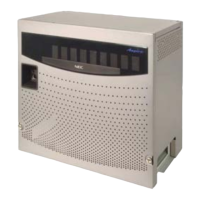Setting Up The Networking Feature
IP Networking
Networking ◆ 17
In-Band/Out-of-Band DTMF Signaling
In-band signaling is the way to send DTMF tone just as audio (in band of the RTP packet). There is
no other message sent to the far end for the DTMF digits. Therefore, if this is used with G.729 pro-
tocol, the DTMF tone will not be received properly. At the level G.729 compresses the audio, it
affects the actual DTMF tone and it can not be interpreted by the far end. This is by the design of
VoIP and there is no way to correct it.
Out-of-band signaling sends a special message to the far end for the DTMF digits (out of band of
the RTP packet). The actual DTMF audio will be muted. There are two signaling types - RFC2833
and H.245. Both signaling types should work on every protocol (G.729, G.711, etc.).
Aspire software version 2.63 and higher supports out-of-band signaling, allowing DTMF digits to
be sent when using G.729 protocol. However, in-band signaling on G.729 will never work on any
phone system unless the deÞned compression rate is changed.
To enable the out-of-band signal function, you must have software 2.63 or higher, change Program
84-12-31 : H.323 Phone CODEC Information Setup - DTMF Relay Mode to RFC2833 (an
entry of "1"), and change 84-06-10 : VOIPU Setup - DTMF Behavior for the card slot of the VoIP
card to out of band (an entry of "2"). If these options are not set, DTMF tones will not be sent
across the network. This will affect voice mail as well as any other device requiring DTMF.
Call Transfer to i-Series System Via VoIP Connection
When an Aspire system is connected via a VoIP connection to an i-Series system in a tie-line type
setup, in order to transfer calls from the Aspire system to the i-Series, in addition to the VoIP pro-
gramming, set up the Flexible Routing Tables as follows:
● Program 44-05-01 : ARS/F-Route Table ; Table Number 1 = 9 (Trunk Group for Aspire
VoIP Trunk)
● Program 10-23-02 : H.323 System Interconnection, IP Address ; System Number 3 =
172.16.9.10 (IP Address for i-Series System)
● Program 10-23-04 : H.323 System Interconnection, Alias Address ; System Number 3
= 4 (For Dial 4 Calls)
With this programming, the Aspire system will wait for the Trunk Interdigit Timer to expire before
dialing out after an i-Series extension (4xxx) is dialed.
If the F-Routing is set up with Program 44-05-01; Table Number 1 set to 103 (Networking) and
Program 10-27-01; System ID 3 = 172.16.9.10 (IP Address for i-Series), though the
i-Series system will be able to transfer calls to the Aspire, the Aspire system will not be able to
transfer to the i -Series.
Explanation of Routing for IP Networking
When a user places a call to a remote extension number the dialled digits are checked against the
Numbering Scheme in Program 11-01. This will provide the Node ID number of the route to the
remote system.
The Aspire will then Þnd the destination IP Address by searching Program 10-27 for the destination
IP Address for the given Node ID number.

